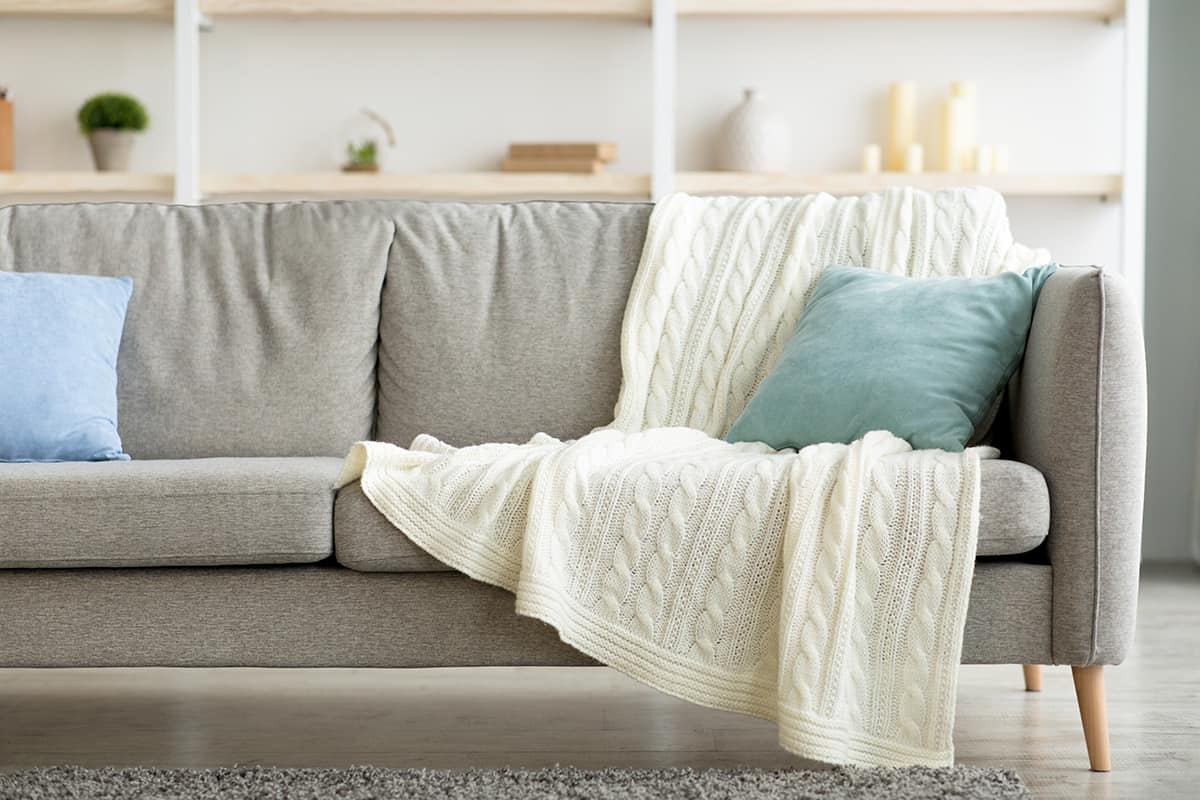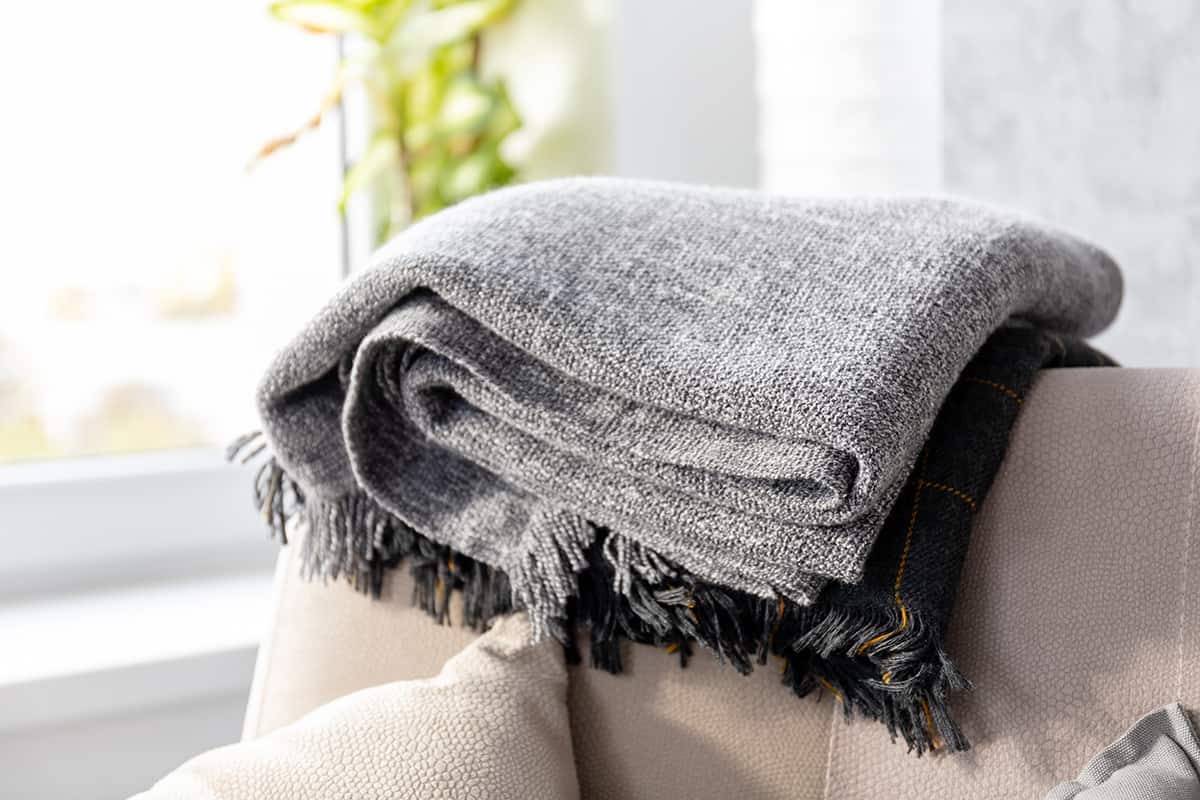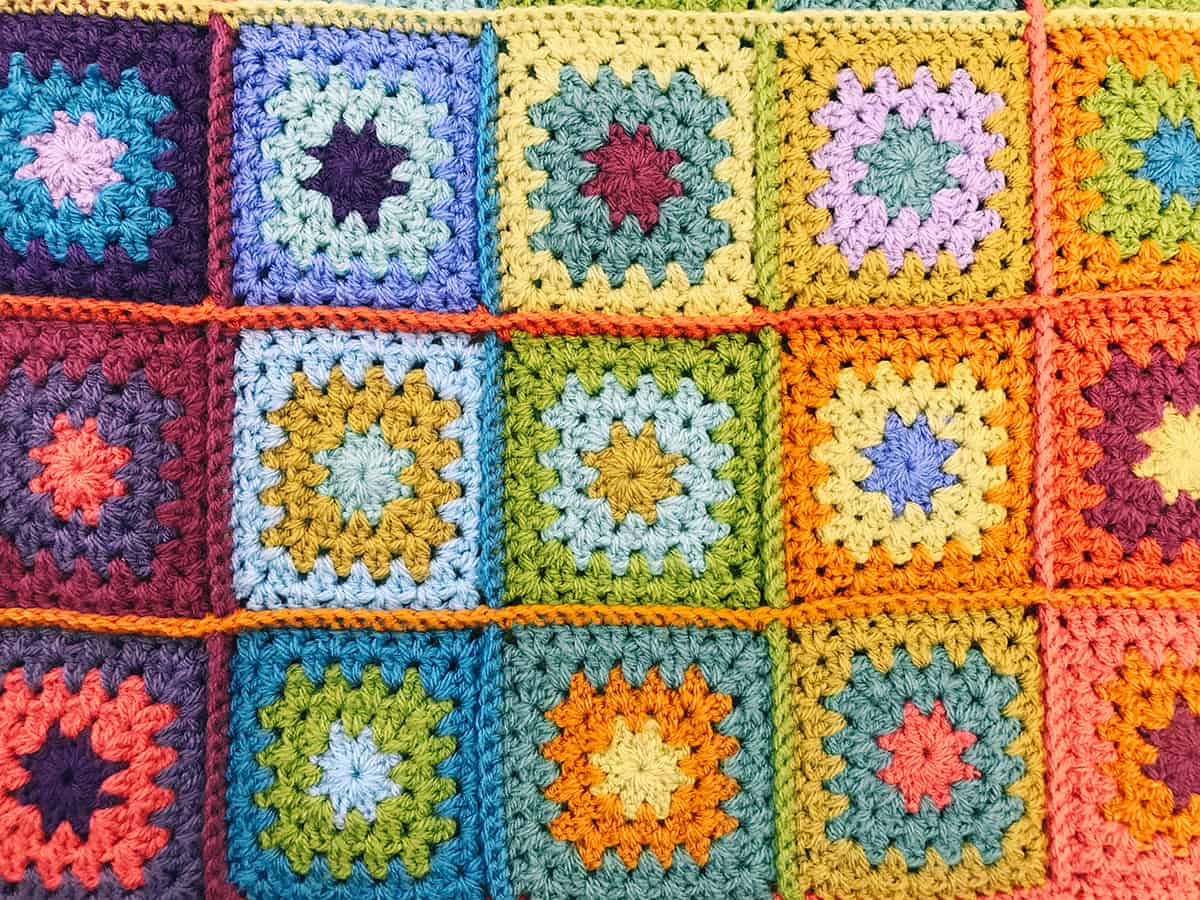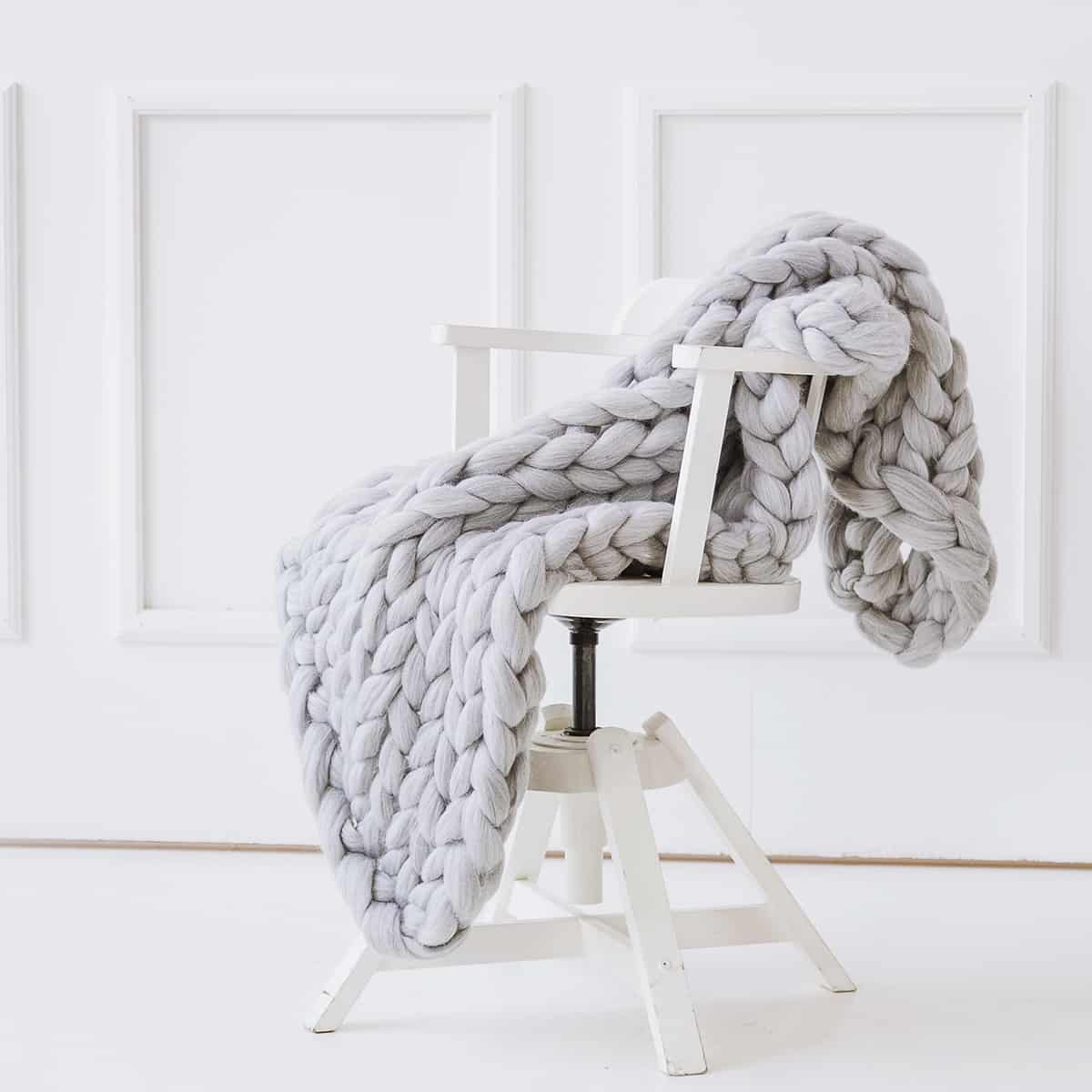A lap blanket is a smaller version of a regular blanket. You’ll want to make sure you know the size of your lap, but once you do, a lap blanket should fit comfortably around it. Lap blankets are ideal for people who need something portable that’s easy to carry around with them: ideal for those who are confined to their wheelchair or bed and also great for traveling.
Keep reading to learn the dimensions of a lap blanket.
Sizes of a Lap Blanket
For most people, 30-45 inches is a good size for lap blankets. This means that when you sit on the sofa with your blanket wrapped around your legs, it will cover them perfectly.
It’s also nice to know that this is a common size: most people can easily fit one in their closet or under their bed without any problems.
Lastly, it’s great to know that if you want to make or buy a lap blanket for someone else (or yourself), this is an easy measurement to work with!
How to Choose the Right Size Lap Blanket
It’s easy to get overwhelmed by the many options available when it comes to choosing a lap blanket. The most important thing to keep in mind is that you want your blanket to be big enough for you and your pet (if you’re snuggling with one) so that no one gets their toes or tail stuck underneath.
A basic rule of thumb is that if you want a full-sized throw blanket, usually about 60″ x 50″ (about 5′ x 4′), then your finished square should be about 36″ on each side (about 3′).
If you’d rather have an oversized throw that’s more like 70″ x 50″, then just cut those numbers in half. If making two squares at once seems too tedious, consider starting with just one large square and then adding another layer later on down the road!
How Long Should a Lap Blanket be?
The size of a lap blanket depends on the size of the lap. You can make a blanket that is however long you want it to be, but it’s best to keep in mind how long your recipient will like using it before deciding on a length.
The ideal length for most people is about 3 feet in diameter, but some people may prefer something larger or smaller than this number.
If you’re making a lap blanket for someone who isn’t very tall, such as an infant or small child, then you could make their blanket even smaller than 3 feet because they’ll have less room on their laps anyway (and their mommy will probably be carrying them around in her arms most of the time).
How to Make a Lap Blanket
Decide on the size you want
The first step in making your lap blanket is to decide on the size you want. There are two main factors to consider: the purpose of your lap blanket and how much yarn you have.
Gather the supplies you’ll need
With the right tools and plan, crocheting can be relaxing and fun!
You will need:
- The weight of your yarn can make or break your project. It’s important to choose a yarn that isn’t too thick or thin for the pattern you have chosen.
- Crochet hook(s). Most patterns specify which size hook should be used; if they don’t, try using one size smaller than recommended on the label (this will help prevent your item from becoming too large).
- Scissors or thread snips. You’ll need these in order to cut any threads during the crocheting process!
- Stitch markers. If you plan on doing colorwork (which we’ll discuss further below), these are very useful tools and worth investing in! Stitch markers come in many different shapes/styles, but all serve essentially the same purpose – helping keep track of where you should be working next!
If you want to go the extra mile, you can decorate your blanket with buttons or other embellishments.
Choose a pattern
If you’re using a pattern, make sure the one you choose is in your skill level. For example, if you are a beginner crocheter and have just learned to make single crochet stitches, try a simple block stitch pattern with only one color change per row.
If your skills have progressed to making half-double and double crochet stitches, try something with more color changes, such as this one or this one. If your skills have evolved even further (and we hope they do!), consider trying out an intermediate-level pattern like this beautiful shawl or these gorgeous booties.
Choose a comfortable yarn that’s easy to work with
When choosing yarn for your lap blanket, be sure to choose a soft, non-itchy yarn that you like the feel of. You also want to choose a yarn that is easy to work with. This means avoiding fibers such as angora or mohair because they tend to get tangled easily; instead, opt for acrylics or cotton blends if possible!
If possible, test out the pattern with a few rows before starting. Use graph paper to map out your pattern if it’s complicated or has several color changes.
Choose your hook size
Make sure your hook size matches the yarn weight you’re using so you get an even gauge throughout.
The hook size you use should match the yarn weight you’re using, so you get an even gauge throughout. For example, if your yarn is categorized as “lightweight” (a 2 or 3), your hook should be a G-hook. If it’s a “medium” (4-6), use an H-hook; for “worsted” (7-9) or “aran” and “bulky” (10+), use an I- or J-hook. If your stitches are uneven with different yarn weights and hooks, changing the hook size will ensure that each stitch is the same size!
It’s okay if your gauge is slightly off at first, as long as it evens out eventually
If you find that your gauge is off, don’t panic! As long as it’s consistent, you can still use your gauge to figure out what size hook and yarn to use. If the difference between the two measurements is greater than half an inch, then you might want to start over and try again; otherwise, there’s no need for drastic measures.
If your gauge is inconsistent (due to a variation in tension or due to some other factor), then that’s okay too: just keep trying until you get it right. You may find that some rows are looser than others or vice versa; this isn’t abnormal, and it doesn’t mean anything bad has happened—just keep going!









